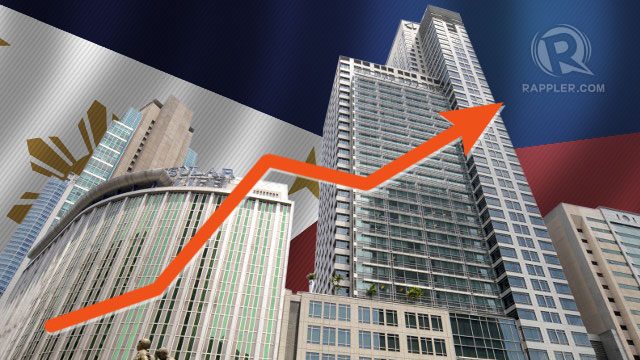SUMMARY
This is AI generated summarization, which may have errors. For context, always refer to the full article.

MANILA, Philippines – It’s supposed to be a tricky year given the elections, but the country’s economy has so far surpassed all but the most wide-eyed expectations.
The Philippines was the fastest growing country in Asia for the first half of 2016. It saw a strong start in the first quarter, followed by even better gross domestic product (GDP) growth of 7.0% in the second quarter.
It is on track to hit the government’s target of 6% to 7% growth for the full year.
“Growth is expected to remain solid as the economy is firing on all cylinders,” said Bank of the Philippine Islands (BPI) senior research officer Nicholas Mapa.
The traditional growth drivers of consumption and consumption-related investments are being complemented by government expenditure, Mapa explained, so “the lower end of the target is very much attainable.”
Mapa added that exports, which have been down for 15 straight months, will finally bounce back as the trade gap is expected to tighten with imports petering out towards the end of the year.
Cid Terosa, Dean of the Economics Program at the University of Asia and the Pacific (UA&P), echoed this prediction, saying that growth will be about 6.5% to 6.9%.
UA&P senior vice president and CRC research director Bernardo Villegas was even more optimistic, predicting that 2016 growth will exceed government expectations at 7.2%.
Loss of election spending
Besides the sluggish exports, the other potential worry facing the economy is the loss of election spending, which really boosted GDP growth.
Aside from driving consumption, the government is typically in a rush to roll out projects during an election year, as seen in the last few months of both the Aquino and Arroyo administrations.
This trend has often resulted in “boom and gloom” cycles, with Mapa noting that the 2010 transition saw a 2-percentage-point drop in GDP.
He believes, however, that 2016 will be different. While Benigno Aquino III inherited a relatively less healthy fiscal position when he stepped in, Rodrigo Duterte inherited a treasury loaded with fiscal space.
“It’s up to him (Duterte) to use it as vigorously as he promised to,” Mapa said.
Another factor is that the first half of 2016 saw very aggressive importation. The trade deficit widened to full-year levels barely 5 months into the year.
This has some analysts worried about a huge trade deficit that could affect growth. Net exports, in fact, hurt Q2 GDP.
“A closer inspection, however, of the imports shows a surge in capital goods expenditures and semi-processed materials that eventually find their way to the export market,” Mapa said. “This is because capital goods are often bought as investments in order to produce more goods with an example being purchasing tractors or cranes to spur construction.”
He added, “This could mean that the trade deficit narrows in the coming months as exports bounce back.”
Mapa also highlighted the fact that much of the election spending this year has shifted from the traditional methods like flyers to the digital world.
This could be an indication, he said, that the strong growth in consumption may actually have been derived from the overall strong pace of growth, which should be sustained for the second half of the year.
Spending key
Beyond these factors, the economists Rappler spoke to all emphasized that spending more in the second half is the key to filling the gap left by the loss of election spending.
“Clearly, the government will have to fulfill its promise of spending more for infrastructure and even overspend, if necessary,” Villegas said. (READ: Strong Q2 showing maintains pace for more inclusive growth – DOF)
The government has already indicated its willingness to do so by raising the deficit ceiling by 1% of GDP which would allow it to spend more using borrowed money.
“While election spending can explain close to 25% of growth, its effect on consumption spending has a greater effect on growth,” Terosa said. “Without election spending, consumption spending can become weaker, but this can be made up for by government spending and investments.”
Mapa, meanwhile, said spending should not be done indiscriminately and should not come at the expense of recently upgraded credit ratings.
“Government spending has been the missing piece to our growth story in the past 6 years as the previous administration ran a very tight and corrupt-free ship,” he noted.
While consumption is still the key driver of the economy and the loss of election spending will have an effect, OFW remittances which also drive consumption have remained steady.
Recent gains in foreign direct investment have raised hopes of diversifying the economy as well.
As Mapa puts it, “the economy is firing on all cylinders and we’ve begun to move away from being a one-trick consumption-led pony.” – Rappler.com
Add a comment
How does this make you feel?
There are no comments yet. Add your comment to start the conversation.